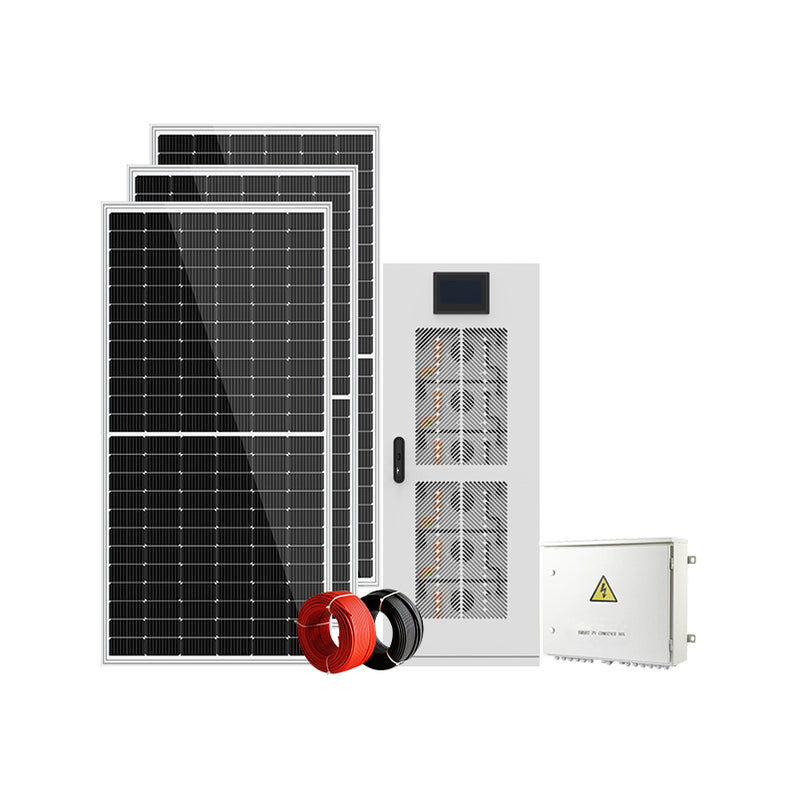Unlocking the Secrets: What Really Determines the Price of a 50kw Solar System?
In an era where sustainability is paramount, the significance of solar energy continues to rise. The increasing demand for solar systems reflects a collective shift towards renewable energy sources that promise to reduce carbon footprints and energy costs. Among the various options available, a 50kw solar system stands out as a viable choice for many businesses and large households. This system typically powers medium-scale operations, supporting everything from commercial enterprises to community facilities. However, as with any significant investment, understanding the factors that influence the pricing of a 50kw solar system is crucial. In this article, we’ll delve into the various elements that determine these costs, ensuring you’re well-equipped to make informed decisions about your solar energy investments.

Understanding Solar System Pricing
A 50kw solar system comprises several essential components, each contributing to the overall cost. The primary elements include solar panels, inverters, and mounting systems. Solar panels are responsible for converting sunlight into electricity, while inverters convert this electricity into a usable form. Mounting systems support the panels, ensuring they are optimally positioned to capture sunlight. The prices of these components vary significantly based on their quality and efficiency. For instance, high-efficiency panels may cost more upfront but can lead to greater energy savings in the long run. Additionally, the installation materials, such as wiring and connectors, also contribute to the total expenses. Understanding these components helps potential buyers grasp the foundational costs associated with a 50kw solar system.
Factors Affecting the Price
Several factors play a crucial role in determining the pricing of a 50kw solar system:
1. Quality of Components
The quality and efficiency of solar panels and inverters are pivotal in pricing. Higher-quality panels often come with better warranties and superior performance, leading to greater energy production over time. While they may require a larger initial investment, they can offer substantial savings on energy bills, making them a worthwhile consideration for many buyers.
2. Installation Costs
Installation costs can vary widely depending on the complexity of the installation and local labor rates. In some cases, a straightforward installation might incur lower costs, while complex installations requiring specialized equipment or extensive labor can drive prices up. It's essential to obtain multiple quotes from qualified installers to ensure you receive a fair and competitive price.
3. Location and Installation Site
Your geographical location and the specifics of your installation site also influence pricing. Areas with strong solar incentives may offer reduced costs, while local regulations and permitting processes can add to expenses. Additionally, site conditions—such as roof type, orientation, and shading—play a significant role in determining the system's effectiveness and the associated installation costs.
4. Market Trends and Demand
Like any market, the solar industry experiences fluctuations in pricing based on supply and demand. For instance, during periods of high demand, such as government incentive rollouts or increasing energy prices, the costs of solar systems can rise. Conversely, advances in technology and increased competition can lead to lower prices over time, making it essential for prospective buyers to stay informed about market trends.
5. Government Incentives and Rebates
Government policies play a significant role in shaping solar system prices. Various incentives, tax credits, and rebates can substantially reduce the overall cost of a 50kw solar system. However, these incentives can vary greatly by region and over time, so it's crucial to investigate what options are available in your area. Consulting with a solar professional can provide clarity on which incentives you may qualify for and how to leverage them effectively.
Comparative Pricing Analysis
When considering the price of a 50kw solar system, it’s useful to compare it with other renewable energy systems. While solar tends to have a higher upfront cost, its long-term return on investment can be more favorable than some alternatives. For instance, wind energy systems may have similar initial costs, but their efficiency can vary based on geographical factors. Understanding these comparisons can help potential buyers evaluate the cost-effectiveness of different renewable energy options and make more informed decisions about their investments.
Key Takeaways on 50kw Solar System Pricing
In summary, the pricing of a 50kw solar system is influenced by various factors, including component quality, installation costs, geographic considerations, market trends, and government incentives. As solar energy continues to gain traction in the quest for sustainable solutions, it's essential for potential buyers to consider these elements carefully. By doing thorough research and consulting with professionals, you can ensure that your investment aligns with your energy needs and financial goals. Ultimately, embracing solar energy not only contributes to a greener planet but can also yield significant economic benefits over time.








